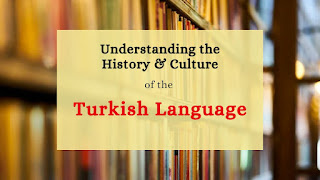Turkey is a fascinating country that straddles two continents, Asia and Europe, and is home to a rich and diverse culture. One of the most interesting aspects of Turkish culture is its language, which has a long and storied history. Turkish is a beautiful language that is spoken by over 80 million people around the world. In this blog post, we will explore the history and culture of Turkish and highlight some of the unique features of this beautiful language.
The Origins of Turkish
Turkish belongs to the Turkic language family, which is a group of languages spoken by over 150 million people worldwide. The earliest records of the Turkic language date back to the 6th century, when Turkic tribes lived in the Altai Mountains of Central Asia. Over time, these tribes migrated westward, and the Turkish language evolved into the form we know today.
Turkish has also been influenced by other languages throughout its history. For example, during the Ottoman Empire, Turkish absorbed many words from Arabic and Persian. Today, Turkish still includes many loanwords from these languages.
The Beauty of Turkish
Turkish is a beautiful language that is known for its unique grammar and syntax. One of the most interesting features of Turkish is its use of agglutination, which is the process of adding suffixes to the end of words to indicate tense, mood, and other grammatical features. This allows Turkish to convey a lot of information in a single word, which can be both efficient and elegant.
Another beautiful aspect of Turkish is its phonetics. Turkish has eight vowel sounds, which include both rounded and unrounded vowels. The language also has four types of consonants, including voiceless, voiced, aspirated, and unaspirated consonants. This gives Turkish a rich and varied sound that is both pleasing to the ear and expressive.
The Culture of Turkish
Turkish culture is diverse and multifaceted, with influences from many different sources. For example, the Ottoman Empire, which was based in Turkey, had a profound impact on the culture of the region. The Ottomans were known for their art, architecture, and cuisine, which continue to be an important part of Turkish culture today.
Another important aspect of Turkish culture is its music. Turkish music is known for its use of traditional instruments, such as the saz and the oud, as well as its complex rhythms and melodies. Turkish music is enjoyed both in Turkey and around the world and has influenced many other musical traditions.
Finally, Turkish culture is known for its hospitality and warmth. Turkish people are known for their friendly and welcoming nature, and visitors to Turkey are often struck by the generosity and kindness of the people they meet. This sense of hospitality is deeply ingrained in Turkish culture and is an important part of what makes Turkey such a special place.
Conclusion
Turkish is a beautiful language that is deeply intertwined with the history and culture of Turkey. Its unique grammar and syntax, rich phonetics, and expressive qualities make it a joy to learn and speak. By understanding the history and culture of Turkish, we can gain a deeper appreciation for this fascinating language and the people who speak it.












No comments:
Post a Comment